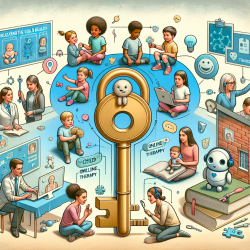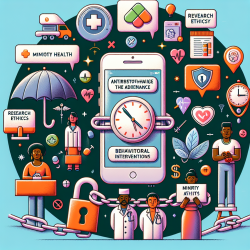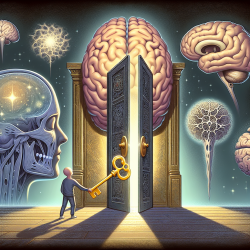In the ever-evolving field of child and adolescent mental health services (CAMHS), staying updated with the latest research and implementing novel approaches is crucial for practitioners. The recent editorial titled "Training & treatment in child mental health services (CAMHS): Novel and collaborative approaches" offers invaluable insights that can help enhance the quality of care provided to young patients. Here, we explore key findings from the research and discuss how practitioners can leverage these insights to improve their skills and services.
1. Acupuncture for Tic Disorders
One of the notable studies included in the editorial is by You et al., which investigated the effectiveness of acupuncture in treating tic disorders in children. Over a 12-week period, the study found a significant reduction in the Yale Global Tic Severity Scale (YGTSS) scores for the acupuncture group compared to the control group. This suggests that acupuncture could be a valuable adjuvant treatment, especially for vocal tics.
2. Transition in Psychiatry
Kilicel et al. focused on the critical period when young people transition from child and adolescent mental health services to adult mental health services. The study highlighted that despite Switzerland's high socio-economic resources, the country faces similar challenges in transition as other European nations. The key takeaway here is the importance of coordination between services rather than merely increasing resources. Implementing national and regional guidelines could significantly improve the quality of transitions.
3. Behavioral Prevention Program on Sexual Abuse
Reis et al. examined a behavioral prevention program aimed at preventing sexual abuse in children with intellectual disabilities. While the program improved prevention knowledge among girls in the intervention group, it showed less effectiveness in prevention behavior, particularly in naturalistic contexts. This underscores the need for more realistic and practical approaches in preventive interventions.
4. Attitudes Toward Innovative Therapeutic Approaches
Lincke et al. explored attitudes toward e-mental health and home treatment within the German healthcare system. The study found that younger individuals were more open to online therapy, while those with lower educational levels preferred traditional methods. Despite the pandemic, acceptance of online therapy did not significantly increase, indicating a need for better promotion and education about these innovative treatments.
Practical Takeaways for Practitioners
Based on these findings, here are some actionable steps practitioners can take:
- Consider Integrative Treatments: Explore the use of acupuncture as an adjuvant treatment for tic disorders.
- Enhance Service Coordination: Focus on improving coordination between child and adult mental health services to ensure smoother transitions.
- Adopt Realistic Prevention Programs: Implement prevention programs that incorporate naturalistic contexts for better efficacy.
- Promote Innovative Therapies: Educate patients and caregivers about the benefits of e-mental health and home treatment options.
To read the original research paper, please follow this link: Editorial: Training & treatment in child mental health services (CAMHS): Novel and collaborative approaches.










